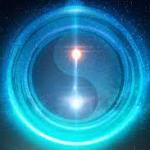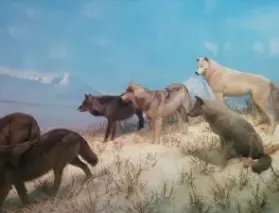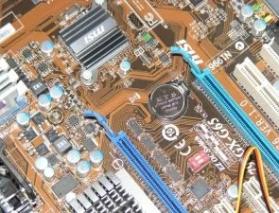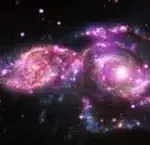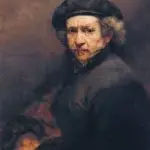 Western philosophy has provided two main metaphors for the nature of the world: the world as organism and the world as machine. The idea of the world as organism was presented boldly by Plato in his Timaeus, suggested by Spinoza and the Pragmatists, and boldly put forth in a new form by Alfred North Whitehead in his Process Philosophy.
Western philosophy has provided two main metaphors for the nature of the world: the world as organism and the world as machine. The idea of the world as organism was presented boldly by Plato in his Timaeus, suggested by Spinoza and the Pragmatists, and boldly put forth in a new form by Alfred North Whitehead in his Process Philosophy.
The world as machine is suggested by the Greek atomists and taken up boldly by Western science, where it underlies much of the reductionist methodology. The Judeo-Christian tradition, which considers the world to be God’s handiwork, is considerably closer to the idea of the world as machine than as organism. If we travel eastward, the Tao of Taoism is much closer to the metaphor of organism.
In the mechanistic view, the world is comprised of matter that is “self-sustaining, externally related, valueless, and without an intrinsic principle of motion.” Organisms, on the other hand, are “interdependent, internally and externally related, value-laden, and intrinsically active.” (1)
We know for sure that organisms exists, for we are organisms. So if the mechanistic view of matter is correct, how do we get from the set of modifiers used in the mechanistic view to that of organism?
For many, the answer that first comes to mind is Darwinian evolution. But this cannot be the full answer. Darwinian evolution begins with the beginnings of life and life in any sense we know it requires rather special conditions. If we accept the Big Bang as the starting point, a considerable amount of organization already has to occur before life and its evolution can begin. At a minimum, a dependable, long-lasting energy source is required – in other words a star. Also, a variety of elements are needed, which means that we need more than one generation of stars – a first generation of stars is needed in which hydrogen is molded into heavier elements. After this another generation of stars is needed that include this collection of heavier elements. For all this to happen, galaxies have to be something more than a random collection of stars, they have to be a system or even an ecology. (2)
Clearly, Darwinian evolution is not responsible for the organization of galaxies and solar systems. Yet we have to account for such organization to understand how we can get from the modifiers of the mechanistic view to that of organism. Here I would like to suggest an answer, one compatible with both the mechanistic metaphor and the organism metaphor.
To say that matter is valueless would seem to be about the least controversial statement we could make about matter. But it is precisely this statement that needs to be questioned if we are to form a bridge between the modifiers of mechanism and organism.
All matter is attracted to other matter. This is called universal gravitation. Gravity is, of course, a purely mechanistic force, but for the sake of argument, let’s call this attraction that matter has for other matter its “preference” for other matter. This doesn’t imply that this “preference” is anything like the preferences of organisms, such as the way I have a preference for ice cream. But I would like to suggest the possibility that such a “preference” might be the first pier of the bridge that connects valueless matter to valuing organism.
That matter “prefers” to be with other matter is absolutely essential to their being stars and galaxies. If all matter were completely neutral in regard to such preferences, matter would simply have drifted randomly apart into the great reaches of space. There would be no light in the world, and the only warmth would be a tiny amount left from the Big Bang, which would be unnoticed and unmeasured. Matter’s preference for other matter means that matter moves toward other matter, and this leads to the formation of the large masses of matter we call stars. So if stars are an essential step to take us from the modifiers of the mechanism metaphor to those of organism, the gravitational “preference” is a primary requirement.
Gravity is one of the four fundamental forces of the standard model. Electromagnetic energy, another one of the forces, has a more complicated set of “preferences.” Using our terminology, electrons have a “preference” for protons, but a “distaste” for other electrons, and vice-versa for protons.
Electromagnetic energy is the energy of life – it provides the chemical bonds that give our body shape, the heat of our metabolism, the strength of our muscle, and even the coordination of signals in the nervous system that we experience as awareness and thought. So if the preference we call gravity is the first pier that sets up the conditions where life can arise, the “preferences” of electromagnetic energy are the second pier that sets life in motion. From this second pier, we can now call upon Darwinian evolution to add its span to the bridge that connects our two sets of modifiers.
There is a great deal more detail to all this, but hopefully this brief sketch makes the point that matter’s non-neutrality, which I have called its preferences, is essential to getting us from valueless matter to valuing organism. But now I would like to start from the other side, with valuing organism, and project back toward valueless matter.
Imagine a situation where a large group of strangers from all over the world have been stranded together in some large arena. When we first encounter this group, we see only individuals wandering alone, with little connection to others. But as time goes by, these individuals will start to find other individuals that they want to be with. Clusters of people who speak the same language or who are from the same country or community are likely to form first.
Once the people have clustered into groups, occasionally people will wander from one group to another. The recurrence of original situation with just lone individuals wandering around, however, is highly unlikely. In general, people have a preference to be with other people, just like all matter has a preference to be with other matter. Here I would like to suggest that the process whereby this group of people formed into clusters has something in common with the process by which matter forms into stars. This is a process of self-organization, and what all self organizing processes have in common is that the elements that comprise the entity that is self-organizing have “preferences.” It is the types and strengths of these preferences that determine the characteristics of the resulting organization.
Types of Organization
The notion of self-organization is a relatively new idea in the Western world. The first clear-cut example of it that I can find is Adam Smith’s idea of the hidden hand of the markets. In Smith’s view, markets form wherever people with a surplus of some product meet up with people who have a surplus of other products, and where these people would “prefer” to have some of the other’s people’s surplus more than they want to retain their own surplus. In other words, markets self-organize out of people’s preference to have a variety of goods.
In self-organization, there is no preexisting plan; the organization arises spontaneously out of the preferences of the elements organized. The ecology of our earth, as it has evolved through natural selection, is a particularly extensive and profound form of self-organization. Although certain religious minds remain convinced that this elaborate organization must have been planned by a god, there is no good reason to believe this. Darwinian evolution demonstrates that the simple “preference” for survival, to eat but not be eaten, has propelled the biosphere into its complex ecology.
When we talk about organizing in ordinary language, we often refer to a situation where we first have a plan and than we arrange a set of elements based on this plan. The arrangement of books in a library, based on the Library of Congress classification system, is one example. So is the organizing of stone, wood, glass and other materials into a building based on an architect’s blueprints. In such things as buildings, machines, and transportation networks a plan precedes the actualized product.
An acorn has within its genetic material the plans for an oak tree. This genetic “information” is analogous to the architect’s blueprints, but with significant differences. The plan is internal to the organism, not external to it; the plan is not the product of thought, but of Darwinian evolution; and the plan does not reside centrally, but resides in every cell of the tree.
Finally, we have the kind of organization that leads to galaxies, Smith’s markets, and Darwin’s ecosystems. In this kind of organization, which we’ve called self-organization, no plan pre-exists the organization. The organization arises based just on the preferences of the elements that comprise the organization.
As we explore the world, then, we find three types of organization. If we call organization without a plan “self-organization,” perhaps we might call organization with a plan “algorithmic organization” (at least that is the term that I have coined for it). We can then divide algorithmic organization into two types, based on whether the plan is intrinsic to the set of elements being organized, as it is in an organism, or extrinsic, as it is in a machine or other human artifact. Each of these three types of organization, to an extent, define the subject matter of one of the sciences; respectively the physical sciences, the biological sciences, and the social sciences. Forms of extrinsic organization are also frequently the subject matter of the arts and humanities. And, we can find various mixtures of the types: ecosystems are comprised of organisms, but the relationships among the various organisms and the organisms and their physical environment, is a form of self-organization. Art works are often partially planned, but also partially self-organizing.
Extrinsic algorithmic organization is a form that exists nearly exclusively with human beings. During the last couple hundred years, the landscape of the earth has been transformed by this type of organization, much as starting about four hundred million years ago, the landscape was transformed by the proliferation of new life forms evolving on land. To complete the bridge metaphor, if self-organization provides the piers leading up to Darwinian evolution, than the presence of extrinsic algorithmic organization forms a pier on the other side of that evolution.
The Mysteriously Creative World
In this piece, I have suggested a way in which we can get from the uncreative mechanism of classical physics, to the very creative world in which we live. It is based on two notions: 1) that we can think of the fundamental forces of nature as something like preferences, and 2) that, as Adam Smith had suggested long ago, complex organization can arise just through the preferences of the elements that comprise the organization.
In the theistic view of the world, the Creator has a plan for the world and has created the world according to that plan. God is the architect of the Universe. In a pantheistic view of the world, there is a kind of plan immanent in the world and the world is the unfolding of that plan through time. These are the two major metaphors that I introduced at the beginning of this article. Perhaps Naturalism could be conceived as the view that there is no preexisting plan – its metaphor, the metaphor of self-organization.
But how is it that this world has this set of “preferences”? In his book, The Life of the Cosmos, physicist Lee Smolin addresses this question. Based on attempts to model the self organization of the world, he shows that the actual parameters of this world are an incredibly improbable set. Why the world that emerged from the Big Bang had such specialized parameters is a very interesting question. Smolin attempts an answer, called cosmological natural selection, but it has not received general acceptance. In fact, as things stand, there is no good answer to this question, it is just a mystery.
In my personal understanding of Spiritual Naturalism, nature, creativity and mystery are central concepts. Nature is the Creative Mystery. It is the source and ultimate context of all that exists. If others want to use words like God, Allah, Tao, or the Absolute, that is fine with me. But if they pretend that these words mean anything more than Creative Mystery, I can only smile and walk on.
My life is but a scintilla of Nature’s mystery and my meager attempts at creativity, such as this article, but an infinitesimal flourish of Nature’s creativity. As small as it is, I offer it in gratitude.
Learn about Membership in the Spiritual Naturalist Society
__________
The Spiritual Naturalist Society works to spread awareness of spiritual naturalism as a way of life, develop its thought and practice, and help bring together like-minded practitioners in fellowship.
Notes:
- From the article “Process Philosophy” on the Internet Encyclopedia or Philosophy: https://www.iep.utm.edu/processp/
- The idea that galaxies have an ecology is discussed in Lee Smolin’s, The Life of the Cosmos. I consider this the best book on cosmology for the general reader that I have encountered.



